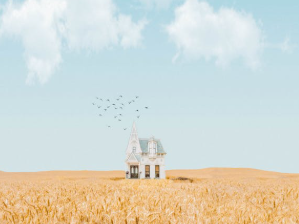
Over the past decade, minimalism has gone from a fringe idea to a mainstream lifestyle. Capsule wardrobes, decluttering marathons, and white-walled apartments have flooded social media. At its peak, it felt like owning less became a kind of status symbol—proof that you’d figured life out.
But now, in 2025, something interesting is happening. People are revisiting the idea with fresh eyes. Minimalism isn’t going away—but it’s changing. Let’s call it Minimalism 2.0.
So, the question today isn’t just “Should I own less?” It’s deeper: Does owning less still make us happier—or have we outgrown the idea altogether?
The First Wave of Minimalism: A Quick Look Back
The early 2010s were the golden years of minimalist lifestyle content. Influencers shared pristine kitchens with a single coffee mug. Entire movements formed around getting rid of 90% of your belongings. Marie Kondo taught millions to ask, “Does this spark joy?”
For many, it was a breath of fresh air in a world stuffed with too much—too much clutter, too much consumption, too much comparison.
But as with most trends, what began with honest intention quickly morphed into something performative. Minimalism became aesthetic. It was less about values, more about vibes. People decluttered only to refill their lives with “better” versions of the same stuff—sleeker, trendier, and often, pricier.
It helped, for a time. But life changed. The world got more complex. And a lot of people began to feel like minimalism didn’t quite fit the way it used to.

Minimalism 2.0: The Shift From Aesthetic to Purpose
Today’s minimalism isn’t about counting how many items you own. It’s about asking how your stuff—and your space—serves your life.
This new version is quieter. More personal. Less concerned with labels.
Here’s how it looks:
- People own what they need, not just what fits in a suitcase.
- They keep things that are meaningful, not just neutral.
- They think less about reducing and more about refining.
The question has shifted from “How little can I live with?” to “What actually adds value to my daily life?”
It’s Not Just About Stuff Anymore
Minimalism 2.0 goes beyond physical possessions. It’s about mental space, too.
Many people are now decluttering their digital lives—cutting down on screen time, removing apps that eat attention, and saying no to the pressure of being constantly available.
Others are applying minimalist thinking to their schedules. Less multitasking. Fewer back-to-back commitments. More time left unfilled—on purpose.
What ties it all together isn’t a perfect closet or clean countertops. It’s this: clarity.
People aren’t chasing emptiness. They’re looking for room to breathe.
Owning Less in a Time of Uncertainty
One of the reasons minimalism found its second wind is because life has felt increasingly unstable in recent years—pandemics, inflation, layoffs, climate anxiety, you name it.
Owning less, for many, is a way to feel more in control.
Fewer possessions can mean fewer obligations. Less financial pressure. Less mental clutter. Less emotional attachment to things that don’t last.
It’s not that people believe material things are bad—it’s that they’ve learned those things don’t always provide the stability or comfort we’re told they will.
So they strip away the excess, not as an act of denial, but as a way to stay grounded in what matters.
Critiques and Misunderstandings
Minimalism has its critics—and rightly so.
For one, not everyone has the privilege to “choose” minimalism. For many, living with less isn’t a lifestyle—it’s a financial necessity. When minimalism becomes a curated aesthetic sold to the middle and upper class, it risks becoming tone-deaf.
There’s also the issue of performative minimalism—people posting pristine, beige living rooms while secretly stressed and overworked. The point isn’t to perform calm. It’s to feel it.
Minimalism 2.0 attempts to move past these issues. It’s less about preaching, more about personal alignment. Not everyone’s version looks the same—and that’s the point.
What People Are Keeping—and Why
Perhaps the biggest change in this new wave is that people are no longer obsessed with getting rid of everything.
They’re asking better questions:
- Does this item make my daily life easier?
- Does it carry emotional weight I actually want to hold onto?
- Is it useful—even if it’s not used every day?
People are keeping family photos. Hobbies with bulky equipment. Books that still matter. Art that doesn’t “match” the décor but means something anyway.
It’s not minimalism for the sake of minimalism. It’s thoughtful ownership.
The Mental Health Angle
Minimalism 2.0 has a strong connection to mental well-being.
When you remove the noise—both physical and digital—you’re left with space to think, feel, and be.
Clutter, studies show, can increase anxiety. Over-scheduling leads to burnout. Constant stimulation from screens makes it harder to focus or relax.
So this quieter, more balanced version of minimalism becomes a tool—not for looking polished, but for feeling more like yourself.
So, Is Owning Less Still the Key to Happiness?
The answer isn’t simple. For some people, yes—owning less brings peace, freedom, and clarity. For others, happiness comes from surrounding themselves with meaningful items, vibrant spaces, or a house filled with memories.
What minimalism 2.0 reminds us is that the goal was never just to own less. The goal was to live better.
And in that sense, minimalism—reimagined, relaxed, and real—still has something important to offer.

Final Thought: Less About Less, More About Intention
At its core, Minimalism 2.0 isn’t a rulebook or a contest. It’s a personal practice—one that invites you to slow down, pay attention, and make decisions that align with your life as it actually is, not how it looks on Pinterest.
If your home, your calendar, or your mind feels crowded, maybe it’s time to edit. Not to impress anyone. Not to chase perfection. But to make a little more room for yourself.
Because in the end, the point isn’t to own nothing.
It’s to own what matters—and let go of the rest.



